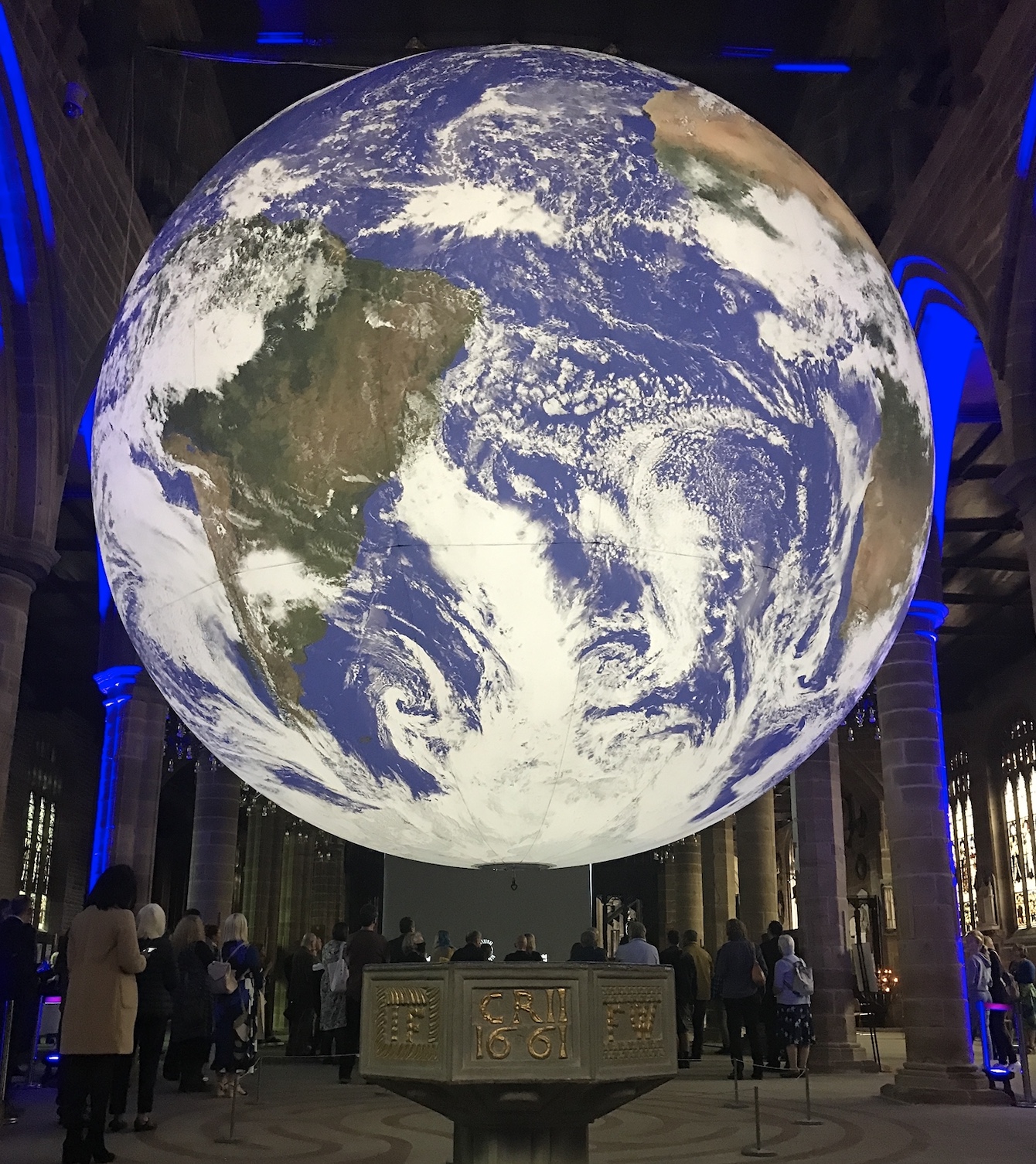Cathedrals Caring for Creation
15th June 2023
Cathedrals caring for creation – one step at a time.
Wakefield Cathedral is the latest cathedral to announce it has achieved bronze in the A Rocha UK Eco Church Scheme, the Christian charity that inspires and resources the church to better care for creation.
Wakefield Cathedral’s Eco Group was set up in 2021 and brings together members of the congregation, volunteers and staff to work towards making the cathedral a greener place to work and worship.
In the summer of 2021, Wakefield Cathedral hosted Gaia, the 7-metre replica of Earth by artist Luke Jerram, as part of the city’s Festival of Earth which led to new community partnerships, and a fresh look at what changes it could make to be greener.

Wakefield now has an Eco Policy, a dedicated Eco Group that produces a regular newsletter, forged new partnerships with green organisations in the city, and later this summer the Eco Group will host a couple of open events for all who wish to engage in study around protecting creation and the theology and spirituality behind it.
Mark, one of the Eco Group members said:
“Climate change is one of the most significant issues facing us today. Having been involved in helping to set up and develop the Cathedral’s Eco Group over the past year, it has been rewarding to see how our faith has guided us during this journey. My contribution has included engaging with the local community to help facilitate the Greener Westgate initiative, showing how as Christians we are playing our part in protecting and enhancing our environment.
Worcester Cathedral has just spent six weeks working with engineering students from Worcester Polytechnic Institute (WPI) in Massachusetts to research the attitudes of visitors towards climate change.
The Cathedral wanted to find ways to better engage its visitors with the issues and although the sample was small, it found that over 90% of respondents were engaged with the subject which led the team to develop some key messages and recommendations from improving signage inside and outside the Cathedral to highlight the relevance of eco issues and practical steps visitors can take, adding “Eco-locations” to the Cathedral’s current brochure – like the Cathedrals West “Creation” window – creating a new eco brochure and including climate issues into Cathedral tours.
The team interviewed 64 visitors, who were mostly from the UK, and mostly people in their 60s and 70s, plus they interviewed some of the cathedral’s own staff too.
Worcester Cathedral’s Eco Group successfully secured funding from the National Lottery last year for a hugely successful series of green community projects under the heading, Living Gently On the Earth. It is now running a second year of events for the whole community to come together and explore ways to live a more eco-friendly lifestyle from faith, cooking, gardening, money matters, shopping and more.
These events include a Big Green Family Fair in October in the Cathedral’s medieval cloisters.
Hereford Cathedral’s Library Building, which houses some of the cathedral’s greatest treasures, has just re-opened after major works to update the specialist system which maintains its humidity and temperature – and is helping reduce the cathedral’s environmental impact.
Home to Hereford’s Mappa Mundi Chamber, the Chained Library, the Archives and the Reading Room – each of the spaces has its own unique environmental challenge to maintain precise conditions to preserve these important artefacts for future generations.
In March the contractors who originally built the Library Building began work to replace the outdated system as it no longer met the modern-day standards required to maintain the correct conditions. The similar, but more modern system is now more reliable and the improvements to its energy efficiency are helping the cathedral’s energy costs and environmental performance.
Alan Cartwright, Head of Estates at Hereford Cathedral, said:
“The replacement of the environmental system has been the culmination of four years of a thorough investigation. The new system is designed with a fully monitored Building Management System (BMS) which will raise and lower the temperature and will add and remove humidity only when required.
The system also has built in manual control within parameters to allow the library staff the ability to pre-empt weather changes as required. As the system is reactive it has meant that there is a huge reduction in the need for gas and electricity to achieve the desired conditions in preserving our artefacts.
“A long list of very skilled individuals and organisations have been instrumental in making sure that the new system is fit for purpose and we are very pleased with the results, ” he added.